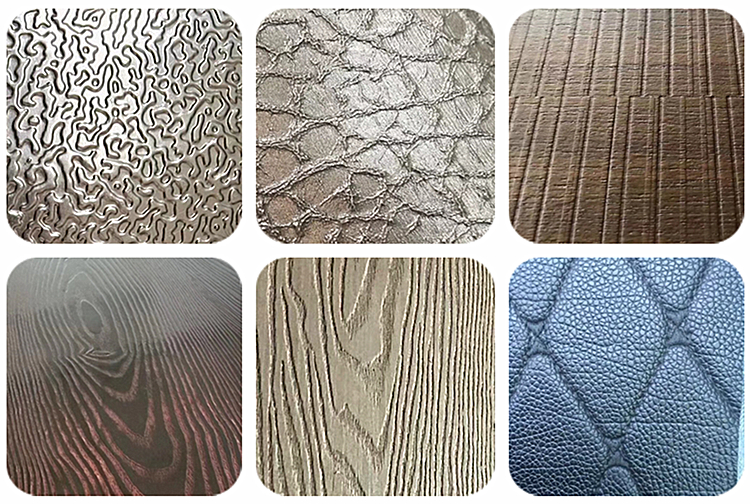COMPANY NEWS
Production and problem prevention of paper embossing rollers
The embossing roller is one of the key components in the paper printing process, and its production needs to meet a series of strict process requirements. As an excellent embossing roller processing factory, Jctprint strictly follows high-standard processes when making embossing rollers to ensure product quality and performance.
Process requirements
1. Surface smoothness
The surface of the embossing roller must remain highly smooth to ensure a clear pattern on the paper. Surface smoothness requirements vary with different embossing designs and paper types.
2. Hardness
The embossing roller needs to be hard enough to maintain its shape and produce a clear pattern during the embossing process. The choice of hardness depends on the type and thickness of the paper used.
3. Pattern design
The pattern design of the embossing roller is a key process requirement. The depth, detail and complexity of the pattern all affect the final embossing effect. Designers need to consider the achievability of the pattern and the handleability of the paper.
4. Wear resistance
Since embossing is a repetitive process, the embossing roller needs to have sufficient wear resistance to ensure a consistent pattern effect after long-term use.
5. Material selection
Embossing rollers are usually made of metal or alloys such as steel, chromium steel or other special alloys. Material selection depends on required hardness, wear resistance and other performance characteristics.
Problems that may arise during the embossing process
There are some common problems you may encounter during the embossing process on paper. These problems may be related to the embossing roller, paper or embossing machine adjustments. Here are some possible issues:
1.Uneven embossing: Uneven embossing patterns on the paper can be caused by uneven roller surfaces, improperly adjusted embossing machines, or uneven paper.
2.Pattern distortion or deformation: This can be caused by damaged rollers, manufacturing issues, or distortion during the production process.
3.Paper waviness: If the moisture content of the paper is uneven, it may cause paper waviness during the embossing process, thus affecting the embossing effect.
4.Unsharp pattern details: If the surface of the embossing roll is not smooth enough, the pattern details may be distorted or unclear.
5.Paper damage: Excessive pressure or roughness on the roller surface can cause damage to the paper, such as tears or scratches.
6.Color deviation: Using different colored papers may result in color deviations in the embossed pattern, which may require adjustment.
7.Roller clogging: If the paper used has larger particles or impurities, they may adhere to the roller surface, causing the roller to become clogged or the embossing to be incomplete.
8.Pattern overlap or misalignment: In high-speed production, if the synchronization of the rollers is not good, it may cause pattern overlap or misalignment.
9.Roller wear: Prolonged use can cause surface wear on the embossing roller, reducing its performance and life.
JCTPRINT’s embossing roller solution
As an excellent embossing roller processing factory, Jctprint has taken a series of measures to avoid the above problems:

1. Quality Control
Jctprint strictly controls the quality of materials and uses high-quality metal or alloy to ensure the hardness and wear resistance of the rollers.
2. Manufacturing accuracy
Jctprint focuses on maintaining a high degree of manufacturing precision during the production process, including parameters such as roller diameter, roundness, surface smoothness and axial deviation.
3. Regular maintenance
Jctprint performs regular maintenance and calibration of production equipment to ensure that all mechanical components are in optimal condition to avoid uneven embossing or pattern distortion.
4. Surface treatment
Jctprint uses advanced surface treatment technology, such as grinding and polishing, to ensure that the roller surface smoothness meets the requirements and avoids the problem of unclear pattern details.
5. Customer communication
Jctprint maintains close communication with customers to understand their needs and specific application scenarios in order to be able to provide customized embossing roller solutions to suit different paper types and embossing needs.
Through these measures, Jctprint is committed to producing high-quality, high-performance embossing rollers to ensure that customers can obtain excellent results in the paper embossing process while minimizing common production problems.

